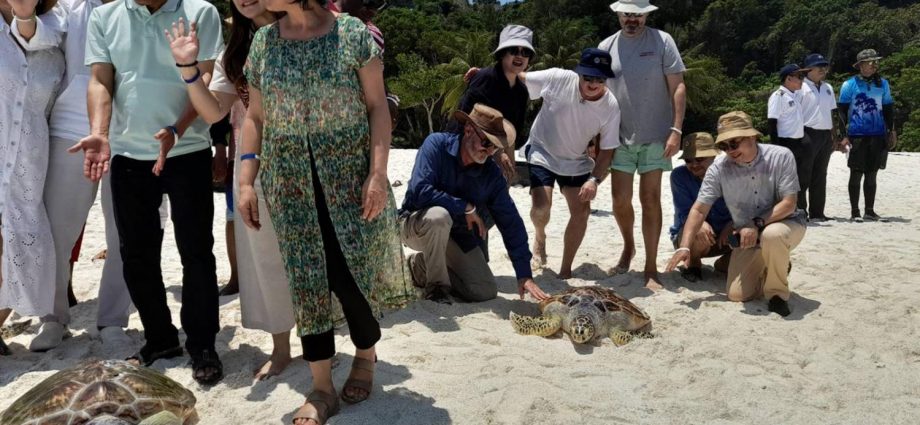Parks Department highlights ‘success’ of royal-sponsored development projects

Diplomats from 80 countries visited the Andaman Coast under an invitation by the Department of National Parks, Wildlife and Plant Conservation to showcase the success of royal initiatives for social development in the South.
The diplomats on Thursday visited the Thung Talay Royal Initiative Project in Krabi’s Lanta district, part of their three-day trip to the Andaman provinces.
They were to survey royal projects initiated by Her Majesty Queen Sirikit The Queen Mother and Her Royal Highness Princess Sirivannavari Nariratana Rajakanya.
Siriwit Phoorinrapeekul, the Thung Talay Royal Initiative Project’s leader, said the project has been developed since 1994, when the province donated 4,200 rai of forest land to Queen Mother Sirikit for preservation and protection from encroachment.
Mr Siriwit said marine animal research and development is now being conducted in the fertile forest zone with cooperation with the Department of Fisheries.
Queen Mother Sirikit’s protection order was made during her trip with King Rama X on April 20, 2000, he said.
In 2007, she introduced a weaving training programme to women living in the community, and the products are sold to the Support Foundation so they can boost their income, he said.
Supattra Kokhai, president of a weaving group in the Thung Talay community, said the project has brought a total of about 200,000 baht per year to 35 members.
The diplomats also visited Koh Huyong, an island in the province’s Mu Ko Similan National Park, a site for a coral reef and marine turtle conservation project by Princess Sirivannavari.
Due to the island’s pristine condition, they were told, it is a perfect place for sea turtles to propagate, under the “Marine Conservation Project of the Coral Reefs and Marine Life in the Thai Seas under the Royal Initiative of HRH Princess Sirivannavari Nariratana Rajakanya”.
Athapol Charoenshunsa, acting chief of the Department of National Parks, Wildlife and Plant Conservation, welcomed the diplomats, saying promoting sustainable tourism in the protected area is a key goal.
“Many measures have been applied, such as limiting the number of visitors and banning foam containers and plastic bags,” he said.
“The Mu Ko Similan National Park welcomes ideas from every sector to complement the Sufficiency Economy and Bio-Circular-Green Economy.”
Mu Ko Similan National Park was designated a national park in 1992, and it is now a part of Andaman Sea Nature Reserves.
It is currently on a tentative list to be listed as a Unesco World Heritage site, a prospect which excited some of the guests. Serap Ersoy, Turkish ambassador, said she was impressed with the projects, especially the one on Koh Huyong.
“I really appreciate Thailand’s efforts to protect and preserve marine life and natural resources,” she said.
“It is a great experience to release turtle [hatchling] into the sea. It is a very special moment in my life. I have also thrown my support behind making such a wonderful place a World Heritage site,” she added. “It deserves to be [on the list].”

